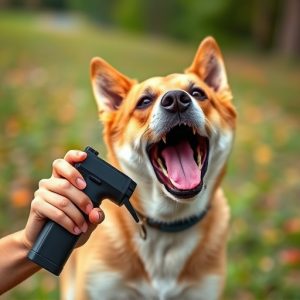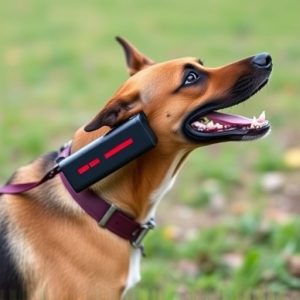Emergency Care for Dogs: Understanding and Using Maximum Strength Dog Repellent Spray
Dog repellent sprays are safe, effective tools for protecting property and pets from unwanted canine…….
Dog repellent sprays are safe, effective tools for protecting property and pets from unwanted canine visitors. Key ingredients like capsaicin and natural oils deter dogs without harming humans. Safe use requires adhering to instructions, monitoring for skin irritation, and seeking veterinary assistance in emergencies. In aggressive dog encounters, spray directly at the face for temporary disorientation while maintaining safety and seeking immediate professional help. Emergency care is crucial for both humans and animals after a dog attack, including wound cleaning, antibiotics, and monitoring for allergic reactions.
“In many situations, dog repellent spray serves as a vital tool for personal safety, especially during unexpected encounters with aggressive dogs. Understanding the maximum strength versions, armed with potent active ingredients, is crucial for effective deterrence. This article guides you through emergency care for such incidents, detailing the steps for optimal use and post-exposure measures. From recognizing active ingredients to learning how to manage potential dog attacks, these strategies ensure your safety and provide essential knowledge for anyone at risk.”
- Understanding Dog Repellent Spray: Active Ingredients and Safety
- Emergency Application: Steps for Effective Use in Close Encounters
- Post-Exposure Care: What to Do After a Dog Attack or Exposure
Understanding Dog Repellent Spray: Active Ingredients and Safety
Dog repellent spray is designed to deter dogs from entering or lingering in a specific area, protecting both pets and property. Understanding the active ingredients in these sprays is key to their effectiveness and safety. Common active components include capsaicin, which is derived from chili peppers, and natural oils like citronella or peppermint. These ingredients are non-toxic to humans but create an unpleasant sensory experience for dogs, encouraging them to stay away.
When using dog repellent spray, it’s crucial to follow the product instructions and guidelines for safety. While these sprays are generally safe, improper use can lead to skin irritation or allergic reactions in both dogs and humans. In cases of emergency care for ingested or exposed animals, seeking veterinary assistance is essential. Repellents should be stored out of reach of pets, and any adverse reactions or unusual behavior should prompt immediate attention from a healthcare professional.
Emergency Application: Steps for Effective Use in Close Encounters
In emergency situations, a dog repellent spray can be a vital tool for protecting yourself and your pets from close encounters with aggressive dogs. If faced with an unexpected attack, quick thinking and proper application are key. Begin by assessing the situation; maintain your calm and assess if you can safely retreat or create distance between you and the dog. If retreating is not feasible, prepare to defend yourself by spraying the repellent directly into the face of the attacking dog. Aim for their eyes and nose area, as this will cause temporary disorientation and potential pain, giving you precious seconds to escape.
For maximum effectiveness, ensure a steady hand and close proximity to the dog. Spraying from a safe distance may not deter an enraged canine. Once applied, create space and monitor the dog’s behavior; if they seem subdued and retreat, quickly move away to access any necessary emergency care for your pet or yourself. Remember, this is a temporary solution, and seeking veterinary assistance or professional help should be your next step in managing potential injuries.
Post-Exposure Care: What to Do After a Dog Attack or Exposure
After a dog attack, immediate post-exposure care is crucial for the well-being of both the affected individual and the animal. The first step is to seek medical attention as soon as possible. Wounds should be thoroughly cleaned with soap and water to reduce the risk of infection. In cases of severe bites or exposure to a dog known to carry diseases, emergency care professionals may administer antibiotics to prevent potential infections.
Additionally, it’s important to monitor the affected area for signs of allergic reactions or anaphylaxis, which can occur within minutes to hours after exposure. If symptoms like difficulty breathing, swelling of the face and throat, or rapid heart rate are observed, immediate medical intervention is required. Remember, emergency care for both humans and animals is paramount in these situations to ensure the best possible outcome.
Dog repellent spray can be a valuable tool for navigating close encounters with aggressive dogs, offering both emergency care and post-exposure measures. Understanding the active ingredients, practicing safe application techniques, and knowing what to do after exposure are crucial steps in ensuring effective protection. By following these guidelines, individuals can better protect themselves and seek appropriate emergency care for any animals affected, emphasizing the importance of preparedness when facing potential dog attacks.


